 Hopefully this week’s episode will help to satisfy the whiners complaining there’s not enough “Koto” in “Kono Oto Tomare”. The Kanagawa qualifier being the logical – only possible, really – stopping point for the anime, there’s obviously going to be a lot more where that came from over the final few weeks. While one might be tempted to assume budget is behind the overall balance (these performance montages are expensive), it’s not – the split between drama and performance is effectively identical in the manga.
Hopefully this week’s episode will help to satisfy the whiners complaining there’s not enough “Koto” in “Kono Oto Tomare”. The Kanagawa qualifier being the logical – only possible, really – stopping point for the anime, there’s obviously going to be a lot more where that came from over the final few weeks. While one might be tempted to assume budget is behind the overall balance (these performance montages are expensive), it’s not – the split between drama and performance is effectively identical in the manga.
 I haven’t compared KoT to Chihayafuru for a while, but if the shoe fits… It’s sort of ironic that the imbalance some viewers complain about in this series has its mirror image in Chihayafuru. Here the stories of the characters take precedence over what happens on stage – with that series (especially after the first season) tournament karuta has dominated the narrative. I love both series in different ways (it’s definitely “love-hate” with Chihayafuru but the “love” part is intense), but if there’s going to be an imbalance I prefer the one we see in Kono Oto Tomare – I care more about the characters in both series than watching them perform.
I haven’t compared KoT to Chihayafuru for a while, but if the shoe fits… It’s sort of ironic that the imbalance some viewers complain about in this series has its mirror image in Chihayafuru. Here the stories of the characters take precedence over what happens on stage – with that series (especially after the first season) tournament karuta has dominated the narrative. I love both series in different ways (it’s definitely “love-hate” with Chihayafuru but the “love” part is intense), but if there’s going to be an imbalance I prefer the one we see in Kono Oto Tomare – I care more about the characters in both series than watching them perform.
 Himesaka is, if I’m honest, not my favorite of the contenders in KoT. Kazusa has a lot to do with that – she’s obnoxious by design. That’s fine, but it makes it awfully hard to empathize with her, especially as her particular brand of obnoxiousness is grounded in entitlement and condescension (even her teammates feel that). Himesaka is in effect a factory school, just like those high schools whose core purpose is to churn out teams that qualify for Koushien. There’s more money in baseball than koto to be sure, but the principle is the same.
Himesaka is, if I’m honest, not my favorite of the contenders in KoT. Kazusa has a lot to do with that – she’s obnoxious by design. That’s fine, but it makes it awfully hard to empathize with her, especially as her particular brand of obnoxiousness is grounded in entitlement and condescension (even her teammates feel that). Himesaka is in effect a factory school, just like those high schools whose core purpose is to churn out teams that qualify for Koushien. There’s more money in baseball than koto to be sure, but the principle is the same.
 With twenty-odd schools participating in the prefectural qualifier it’s obviously impossible to focus on all of them (and thank goodness). And as the reporter and his slacker assistant note, not all of them are contenders anyway. The narrative has to pick and choose, and Himesaka – former ten-time consecutive winner – is the first of them. I’m not a koto expert by any means but certainly koto ensembles, like karuta players, have personalities that are reflected in their performances. And portraying that in the anime is one of the great challenges this series faces (and it’s passing the test with flying colors so far).
With twenty-odd schools participating in the prefectural qualifier it’s obviously impossible to focus on all of them (and thank goodness). And as the reporter and his slacker assistant note, not all of them are contenders anyway. The narrative has to pick and choose, and Himesaka – former ten-time consecutive winner – is the first of them. I’m not a koto expert by any means but certainly koto ensembles, like karuta players, have personalities that are reflected in their performances. And portraying that in the anime is one of the great challenges this series faces (and it’s passing the test with flying colors so far).
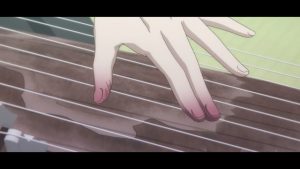 Himesaka is a group that makes its statement through technical merit more than artistic impression. They’re like a figure skater (Nathan Chen, say) who stakes their claim to the title through the difficulty level of their jumps. And no question Himesaka’s technical proficiency is impressive, fitting for a school that has so many members they can afford to make everyone audition and choose only the best (in prior years a step they reserved only for the finals, before their streak came to an end). Frankly though, they bore me as much on stage as off. Their performances sound like high-intensity practice drills to me (though as I said, I’m no koto expert).
Himesaka is a group that makes its statement through technical merit more than artistic impression. They’re like a figure skater (Nathan Chen, say) who stakes their claim to the title through the difficulty level of their jumps. And no question Himesaka’s technical proficiency is impressive, fitting for a school that has so many members they can afford to make everyone audition and choose only the best (in prior years a step they reserved only for the finals, before their streak came to an end). Frankly though, they bore me as much on stage as off. Their performances sound like high-intensity practice drills to me (though as I said, I’m no koto expert).
 If Tokise is the school that represents the polar opposite – a focus on emotional connection rather than virtuosity – I think it’s fair to say that among the main contenders Hakuto (who we’ll hear next) is the bridge between them. Their secret weapon is no longer a secret, as Takinami-sensei learns that math teacher Taishin Yamamoto is in fact Miyabe Tojo, the mysterious composer of their performance pieces. He has an emotional connection to his team, clearly – especially Mio – and knows enough about music to be in awe of Suzu-chan. But it’s math that seems to be the key to “Miyabe’s” compositions – giving them a precision and symmetry which the Tokise advisor clearly admires.
If Tokise is the school that represents the polar opposite – a focus on emotional connection rather than virtuosity – I think it’s fair to say that among the main contenders Hakuto (who we’ll hear next) is the bridge between them. Their secret weapon is no longer a secret, as Takinami-sensei learns that math teacher Taishin Yamamoto is in fact Miyabe Tojo, the mysterious composer of their performance pieces. He has an emotional connection to his team, clearly – especially Mio – and knows enough about music to be in awe of Suzu-chan. But it’s math that seems to be the key to “Miyabe’s” compositions – giving them a precision and symmetry which the Tokise advisor clearly admires.
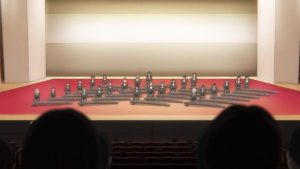 As for Tokise, they head to the tuning room to start preparing for their fateful moment. Chika (as usual) breaks the tension by writing Satowa’s name on his bridge charm after realizing she never made one for herself (Souta tactlessly refers to them as a couple in response) and Akira shows up at the last moment, breathlessly. Their time will come, but for the moment the stage literally and symbolically belongs to the still somewhat mysterious Hakuto – what kind of statement will they make in their first extended stage time of the series?
As for Tokise, they head to the tuning room to start preparing for their fateful moment. Chika (as usual) breaks the tension by writing Satowa’s name on his bridge charm after realizing she never made one for herself (Souta tactlessly refers to them as a couple in response) and Akira shows up at the last moment, breathlessly. Their time will come, but for the moment the stage literally and symbolically belongs to the still somewhat mysterious Hakuto – what kind of statement will they make in their first extended stage time of the series?



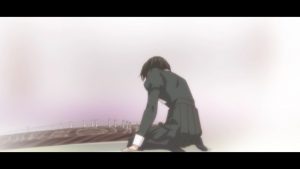
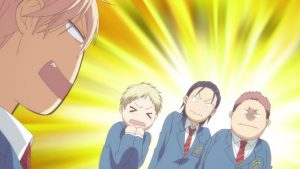


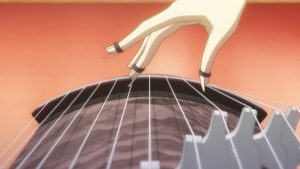


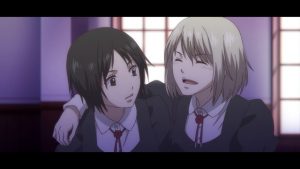

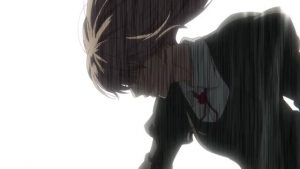
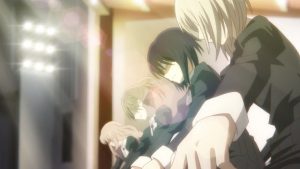


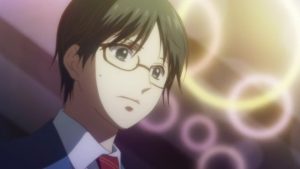
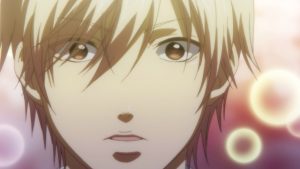
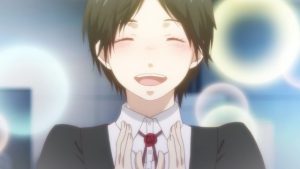


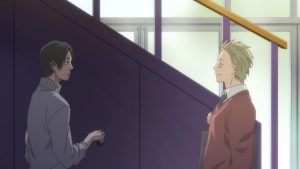



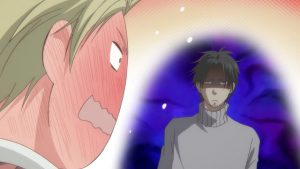
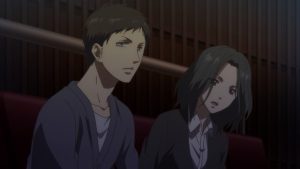

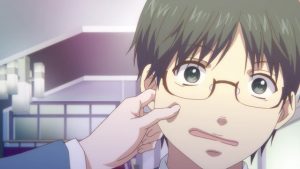






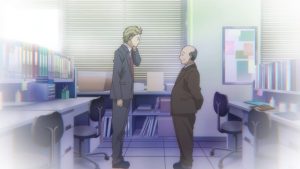

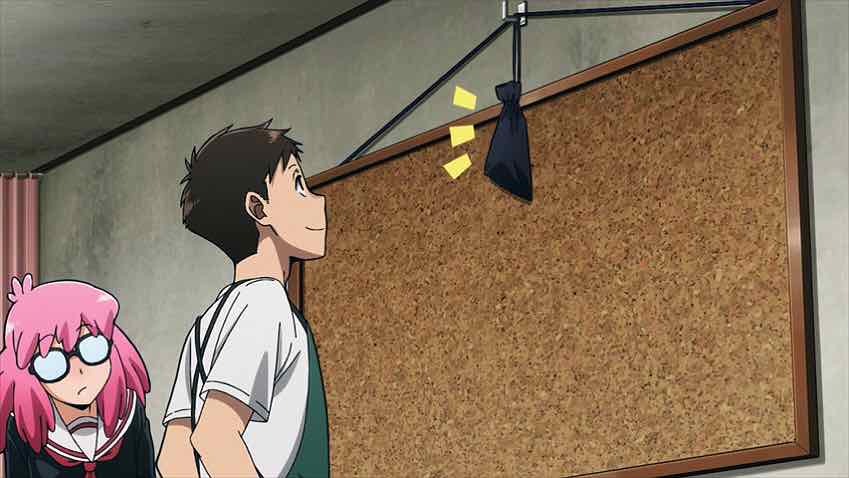
yualexius
December 14, 2019 at 6:10 pmHimesaka did gave us a strong and powerful ‘koto’ playing this time, and it’s really amazing. I also love that we are able to get a glimpse at their backstory and that they had learnt a lesson from their previous lose. It feels great to have that kind of character development in them, and now I am simply excited to see Hakuto’s performance and most especially the Tokise Koto Club performance.